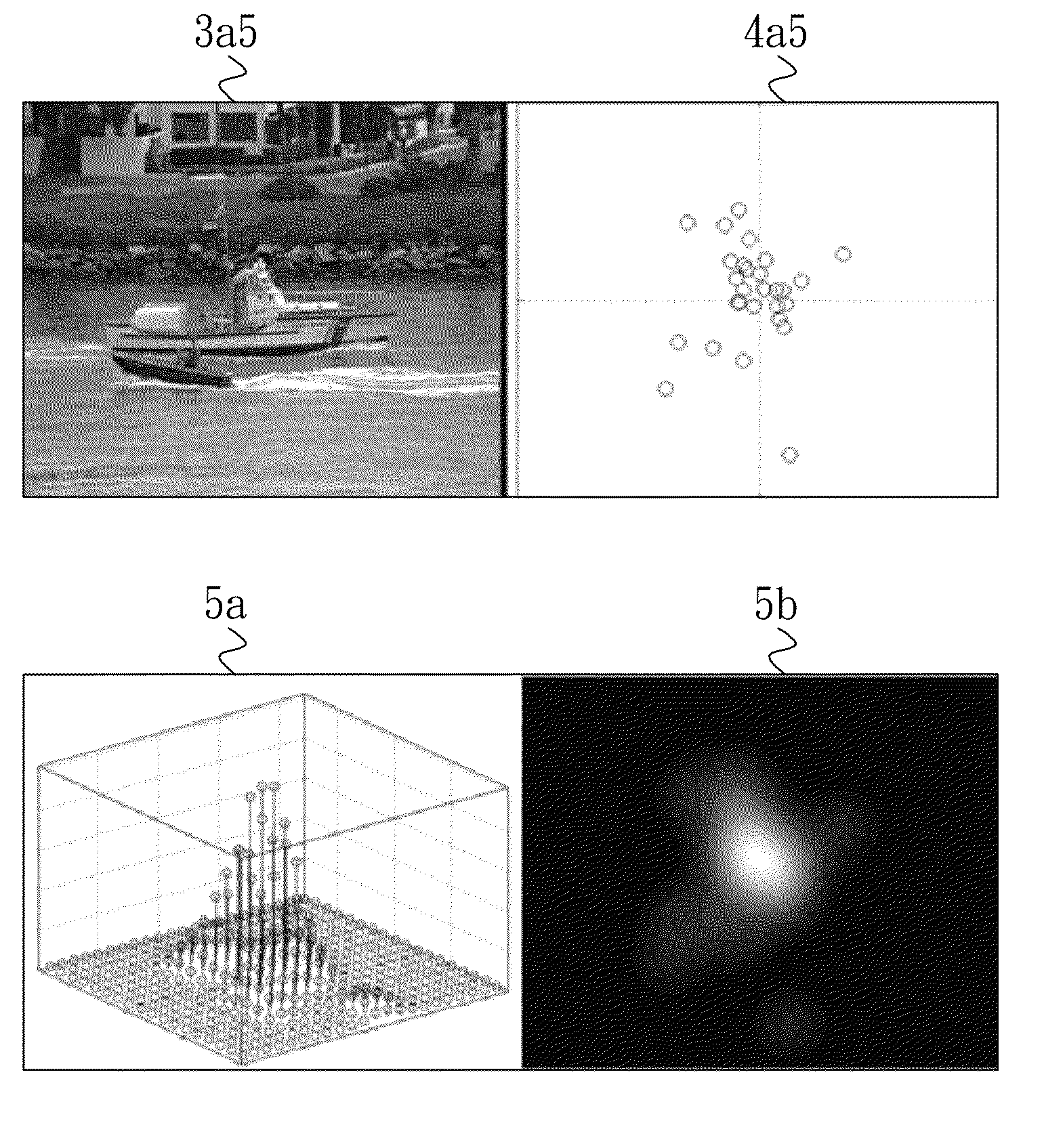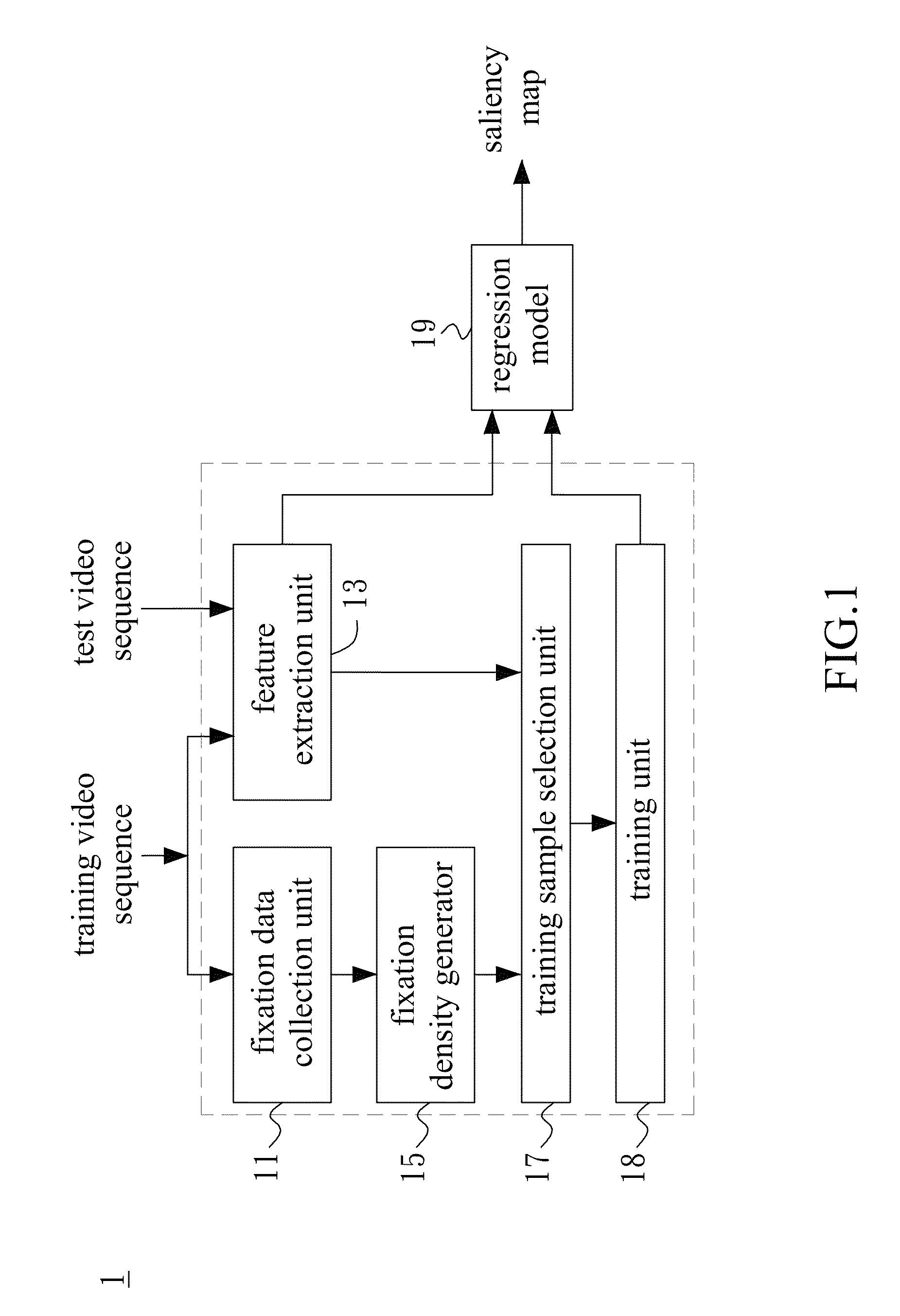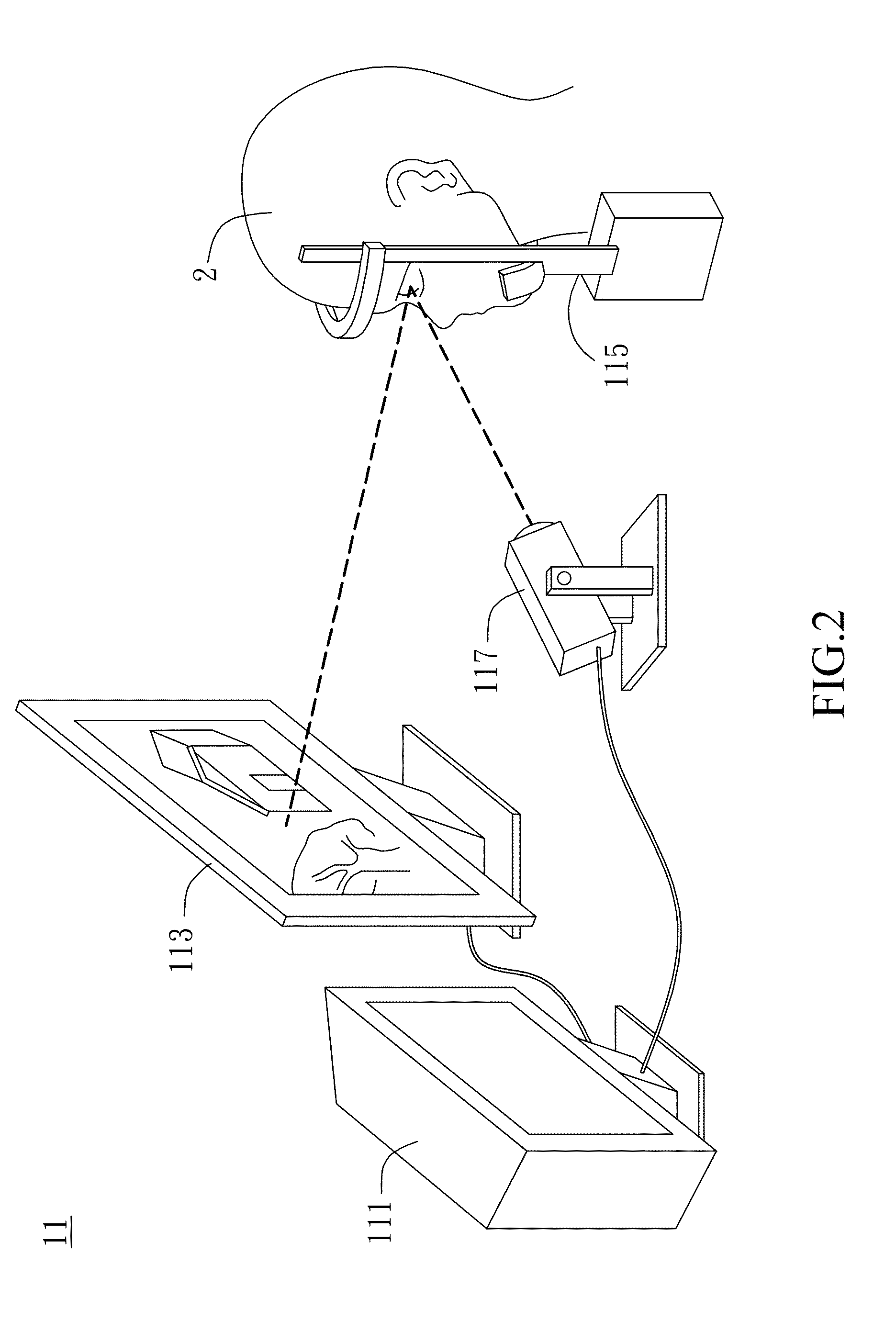Learning-based visual attention prediction system and method thereof
a visual attention and learning-based technology, applied in the field of visual attention prediction systems and methods, can solve problems such as mismatches between estimated salience and actual human fixation, and achieve the effect of effectively predicting visual attention
- Summary
- Abstract
- Description
- Claims
- Application Information
AI Technical Summary
Benefits of technology
Problems solved by technology
Method used
Image
Examples
Embodiment Construction
[0016]Referring more particularly to the drawings, FIG. 1 shows a block diagram illustrating a learning-based visual attention prediction system according to one embodiment of the present invention. The visual attention prediction system 1 comprises a fixation data collection unit 11, a feature extraction unit 13, a fixation density generator 15, a training sample selection unit 17, a training unit 18, and a regression model 19. The computational scheme of the visual attention prediction system 1 is executed in a training phase and a test phase.
[0017]During the training phase, it must obtain the training samples and the fixation data from the given training video sequences, and then learn mapping information needed in the test phase. Firstly, the fixation data collection unit 11 receives a plurality of training video sequences 3a-3h, as shown in FIG. 3, and each training video sequence comprises a plurality of training frames. The fixation data collection unit 11 detects a plurality...
PUM
 Login to View More
Login to View More Abstract
Description
Claims
Application Information
 Login to View More
Login to View More - Generate Ideas
- Intellectual Property
- Life Sciences
- Materials
- Tech Scout
- Unparalleled Data Quality
- Higher Quality Content
- 60% Fewer Hallucinations
Browse by: Latest US Patents, China's latest patents, Technical Efficacy Thesaurus, Application Domain, Technology Topic, Popular Technical Reports.
© 2025 PatSnap. All rights reserved.Legal|Privacy policy|Modern Slavery Act Transparency Statement|Sitemap|About US| Contact US: help@patsnap.com



